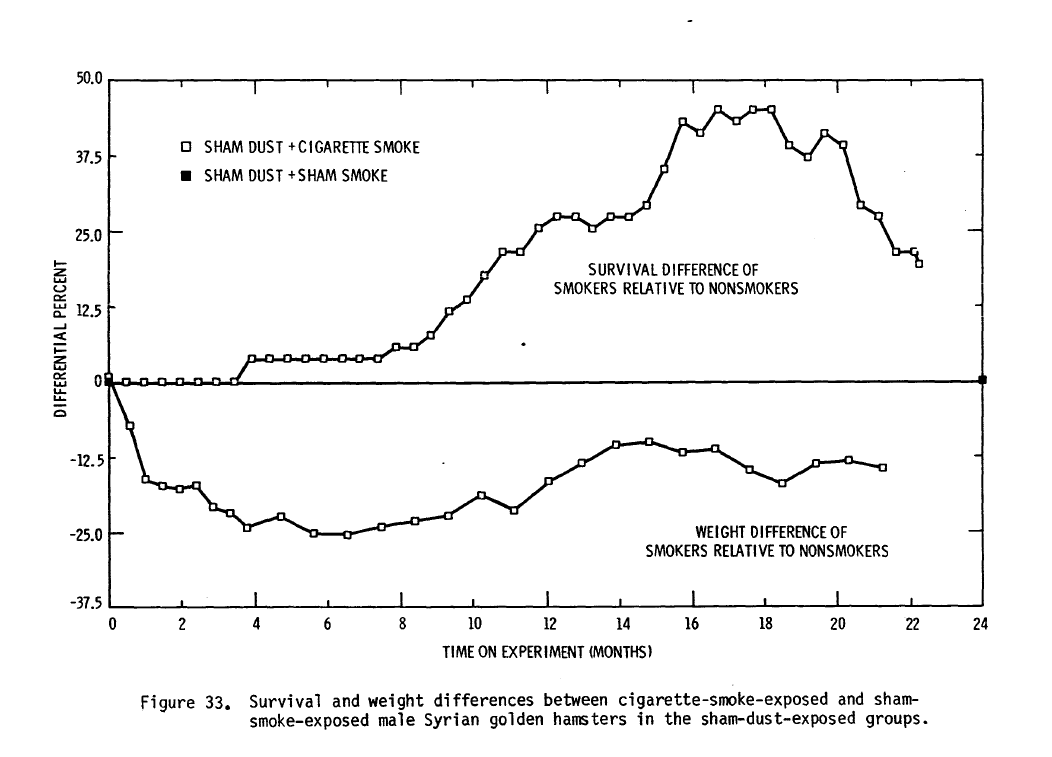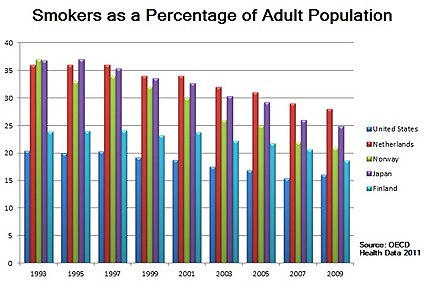I'll try to keep this reply short; yes all lungs are discolored black after continuous inhalation of smoke, particularly tobacco smoke.
Don't confuse this with a condition known as Black Lung Disease, which as Niner says is related to the inhalation of prolonged exposure to coal dust.
Just take a moment to contemplate your filtered cigarette tip and appreciate the gooey filter after each use. Both the tars and nicotine will contribute a deep jaundiced yellow and black staining color (like what happens to your teeth) as well as considerable sludge after each use. These substances will accumulate in the lungs the same way. Regardless of initiating advanced lung disease or COPD they WILL diminish lung capacity after prolonged use even when no other overt symptoms of disease are apparent. The lungs are NOT the digestive track and they do not have a way to purge themselves well of accumulated foreign substances like tars easily. There is a coughing response but that cannot keep pace with the introduction of new accumulations in people who smoke regularly.
Sticky tars have the added bad effect of capturing other particles out of the air and trapping them in the lungs, such as dust and pollen, or as in the case of many miners and construction workers, coal, asbestos, fiberglass and other dangerous particles. In fact adding tars to the mucus lined membranes of the bronchial passages inhibits the few mechanisms the lungs have of purging particulate matter. The alveoli are even more sensitive to this problem as they are a very delicate spongy material that acts just like a filter and has less ability to purge than the passages leading to them.
I personally had the experience of first hand examining such lungs from allegedly healthy as well as diseased cadavers because my father was one of the pathologists involved in the research that connected smoking with cancer starting in the 1950's and he insisted that I help him with his studies while I was growing up in order to discourage me from smoking. I helped prepare the lungs and preserve the tissues before microtoming them and studying them under the microscope. This was done with both human and dog lungs. Even when disease was not apparent prior to death the staining and clogging of the alveoli was invariably observed on direct inspection.
As for the new methods of ingesting nicotine all I will add is that it should be remembered that nicotine is still a very powerful mutagen used in genetics for its ability to shatter genetic bonds and help in transcriptase. As I remember from studying genetics: not all mutagens are carcinogens but all carcinogens are mutagens.
While nicotine's mutagenic properties are indisputable not all people will respond to those by developing cancers and I suspect that as in many other areas, soon we may be able to test for an individual's genetic tendency in this matter. However the link between smoking and cancer is not only for lung disease, it is for ALL the associated soft tissues that are exposed, from the lips on down.
Vaping (a word that always reminds me of "vapid") however, is logically a much better idea than smoking as it produces far less accumulated heavy tar even though "oleo", essentially vegetable oil, is used as a carrier for the drug. I suspect the law of unintended consequence will come into play with this method too because essentially those who vape the wide range of substances now in use are basically volunteer guinea pigs in a gigantic unregulated and uncontrolled experiment with the slow anecdotal sharing of info to gain a better understanding of what is actually happening to the population of users. In ten or twenty years I'm sure we will know a lot more.
Edited by Lazarus Long, 28 August 2014 - 04:18 PM.























































